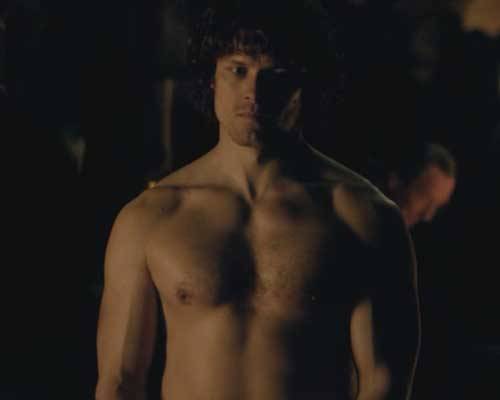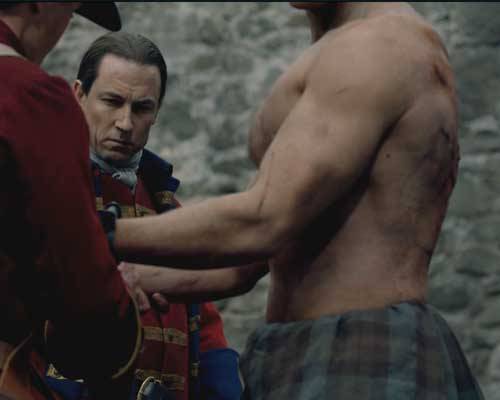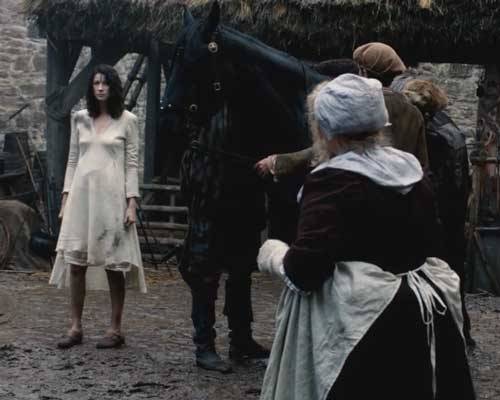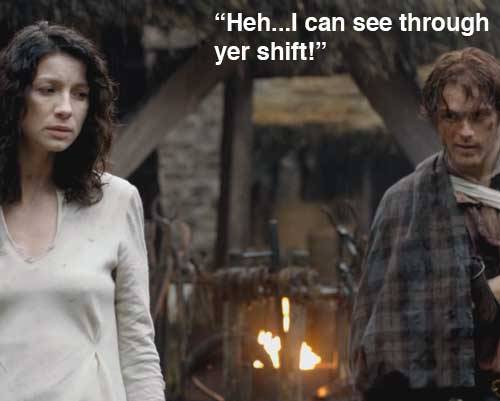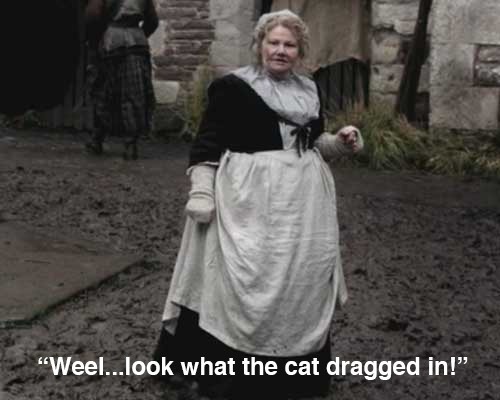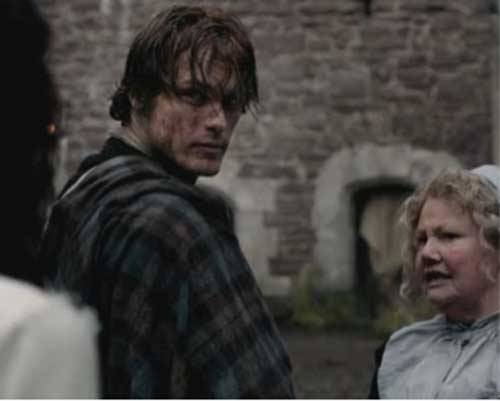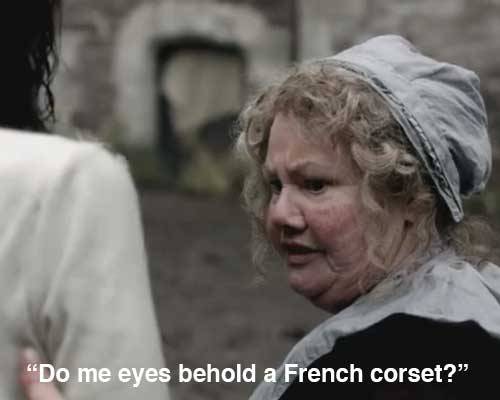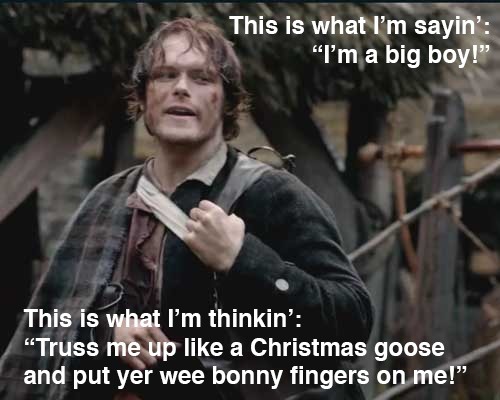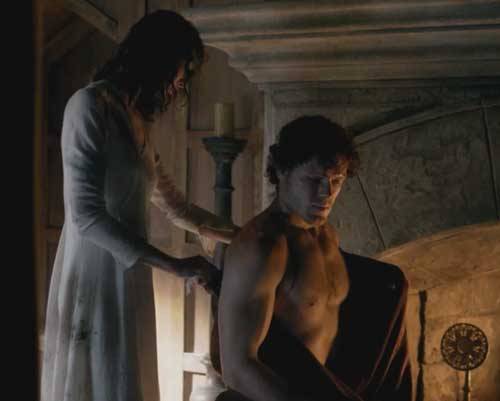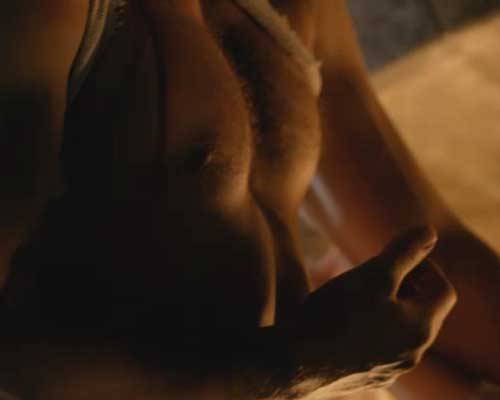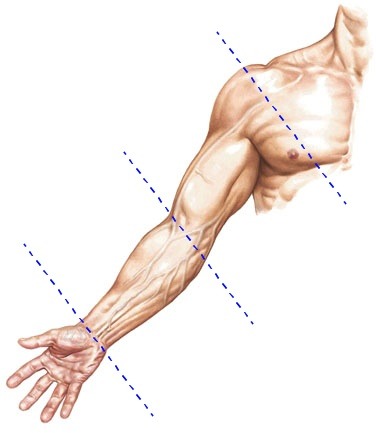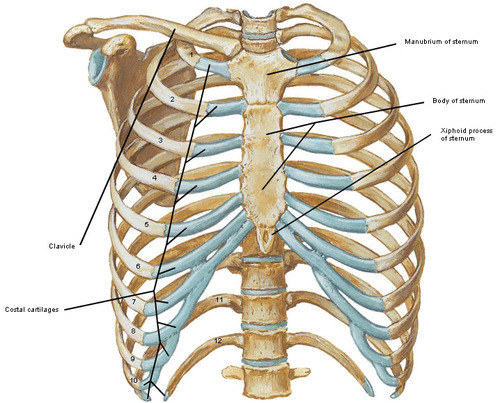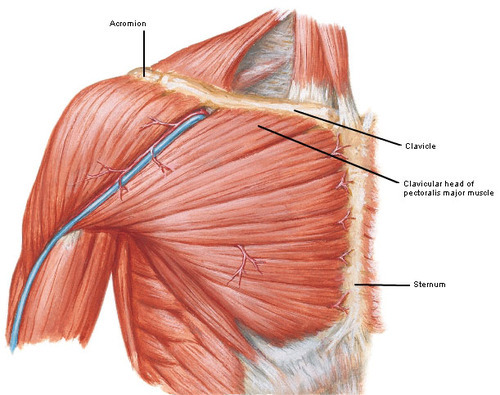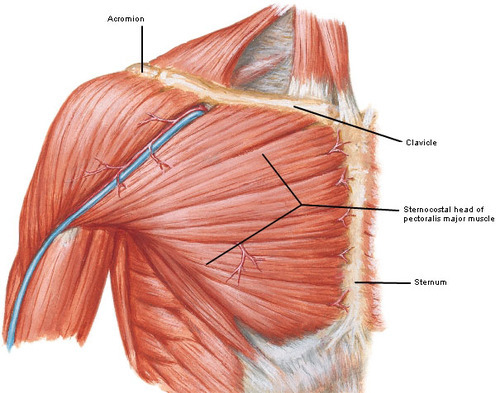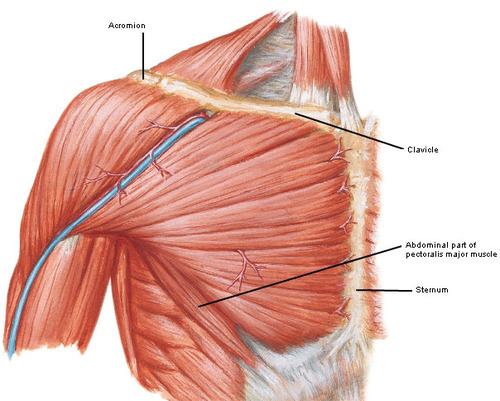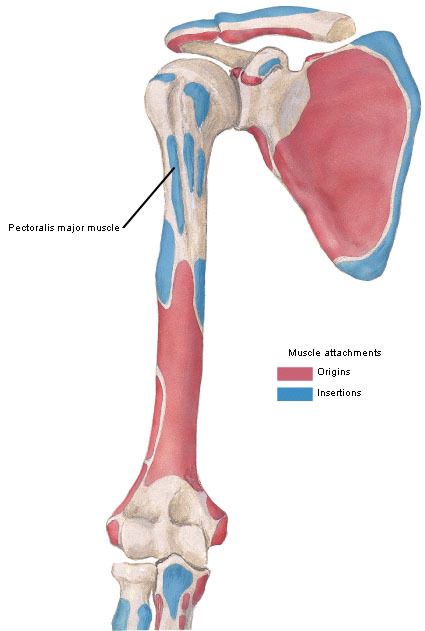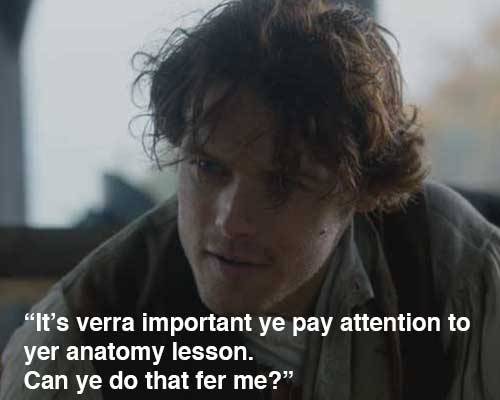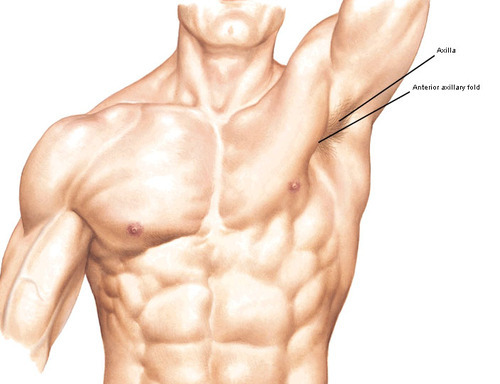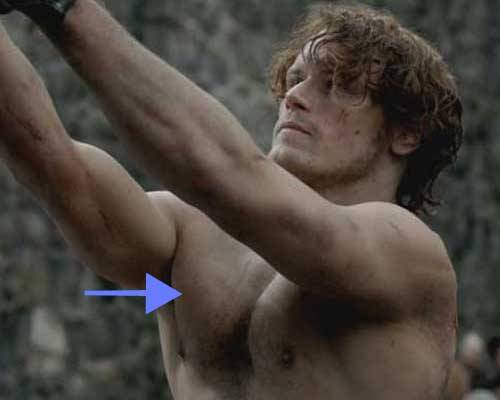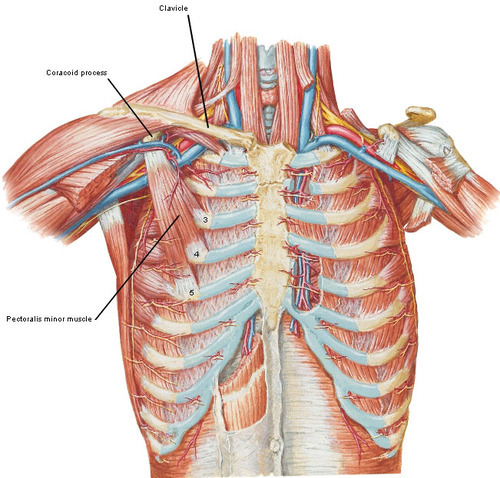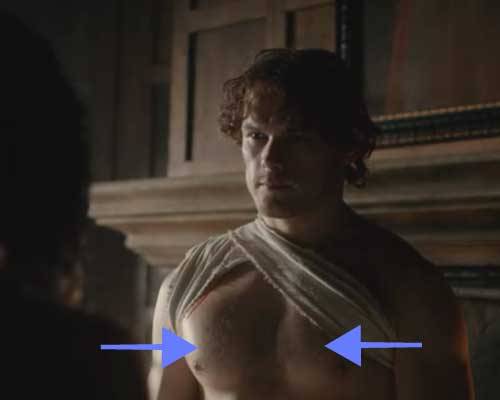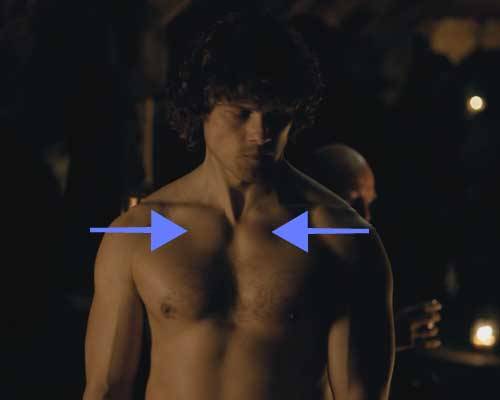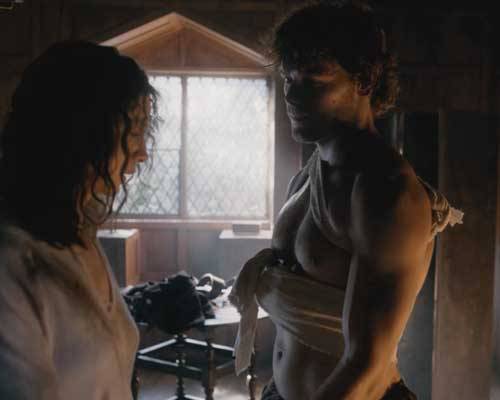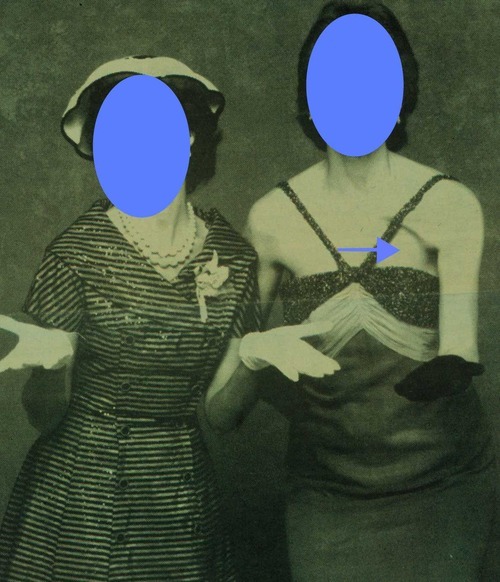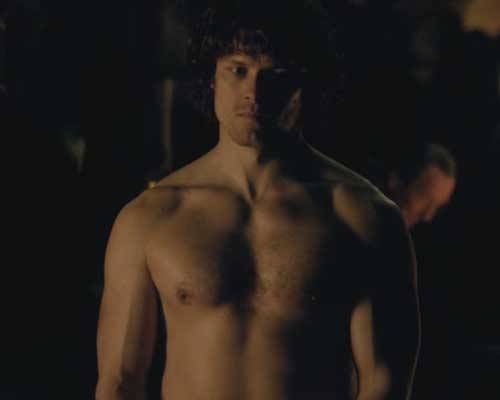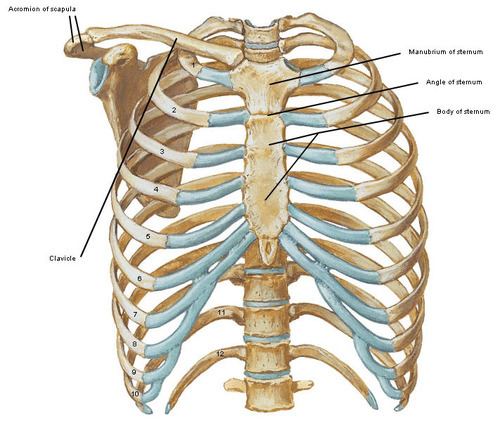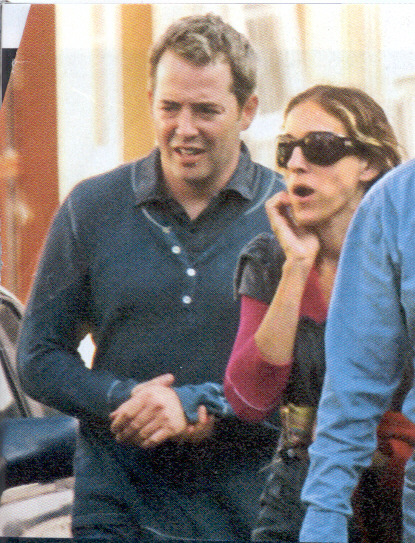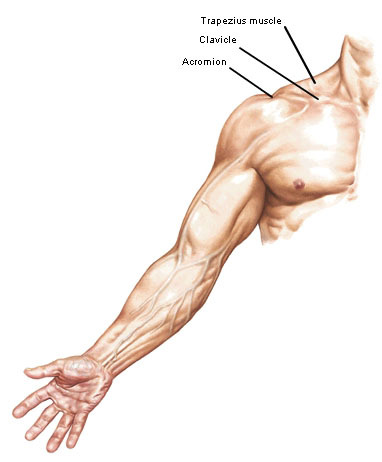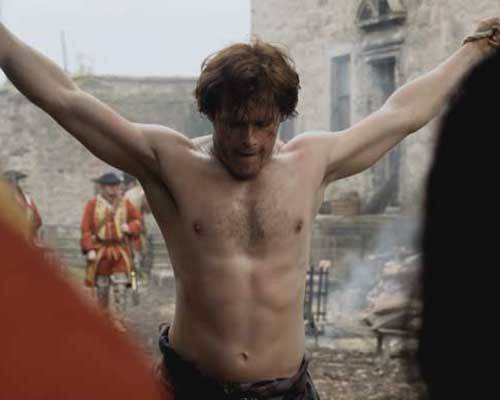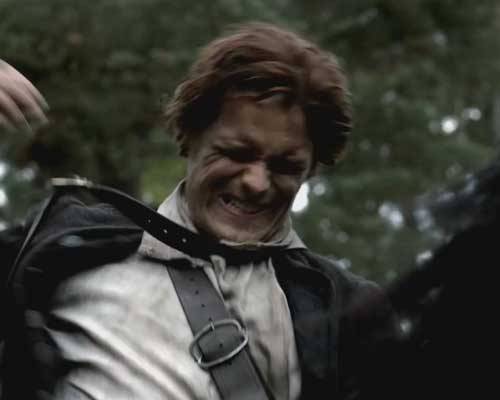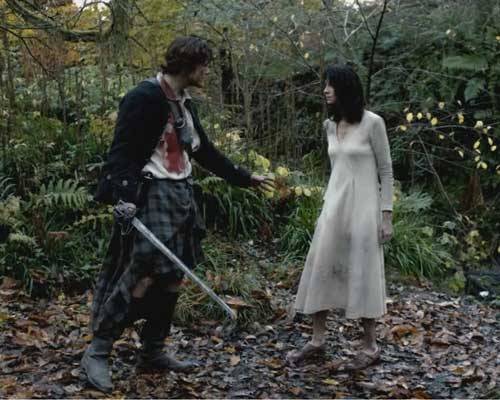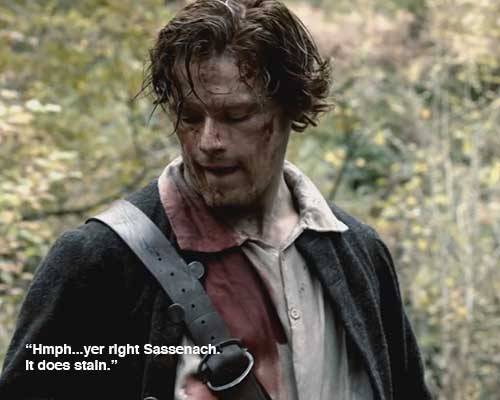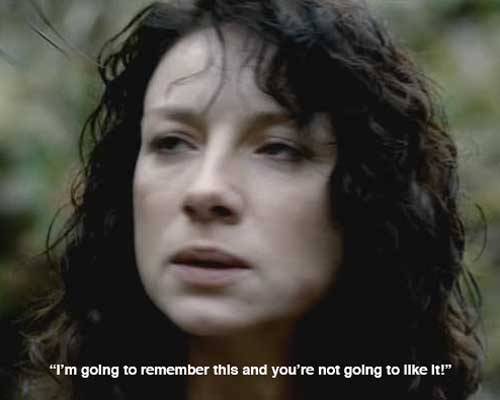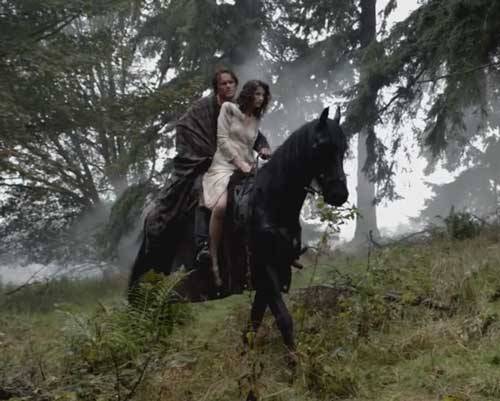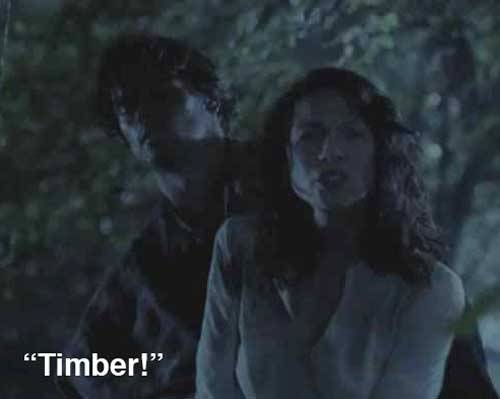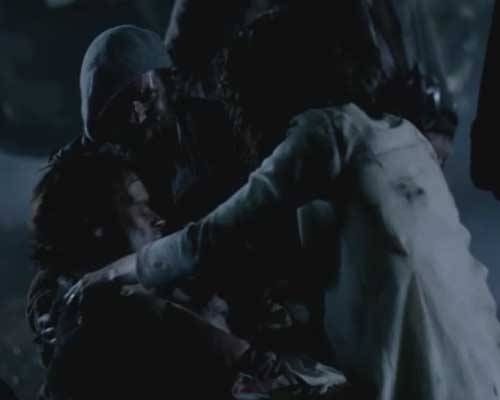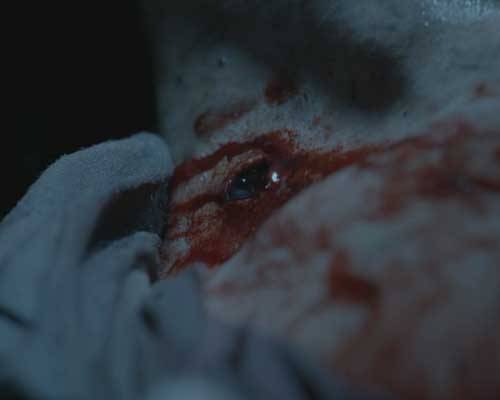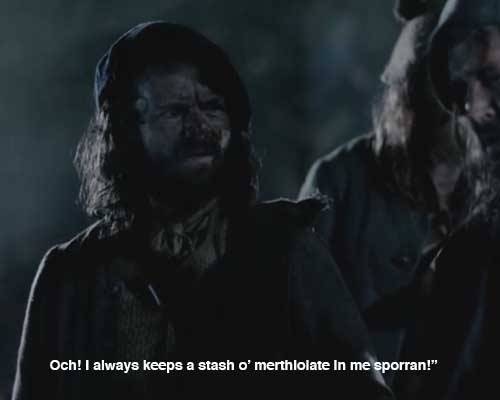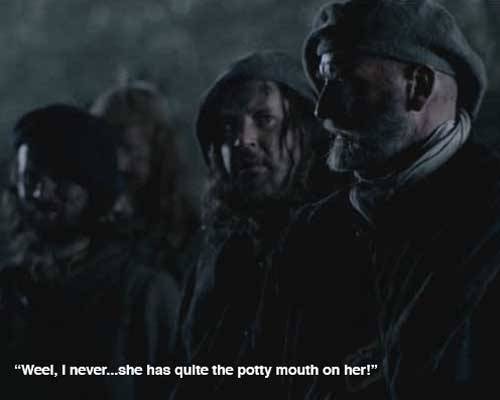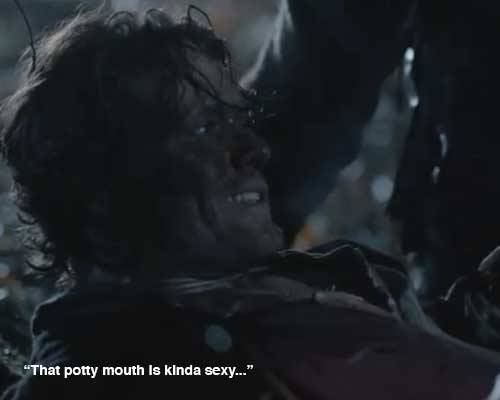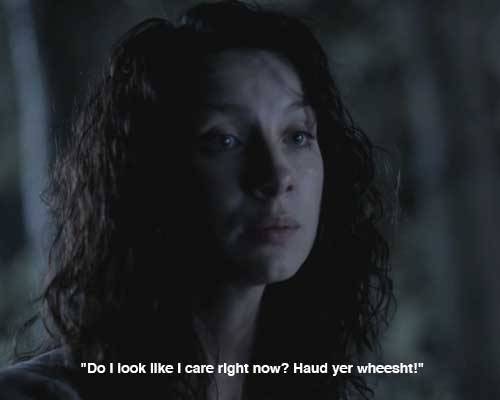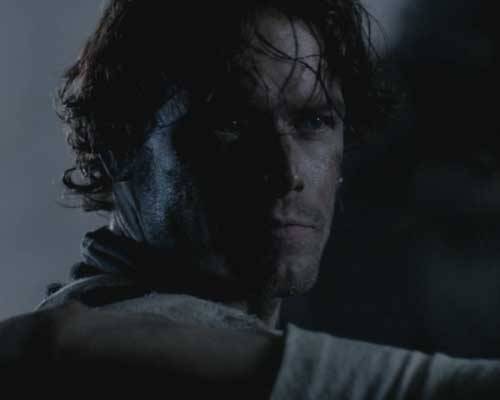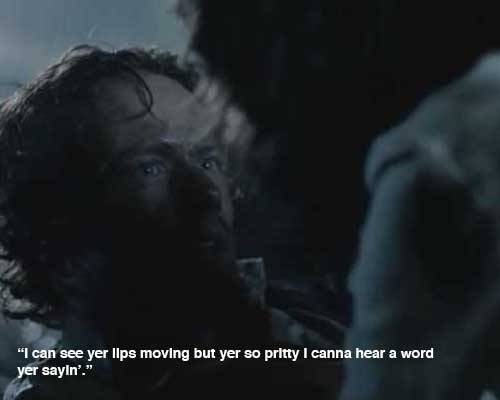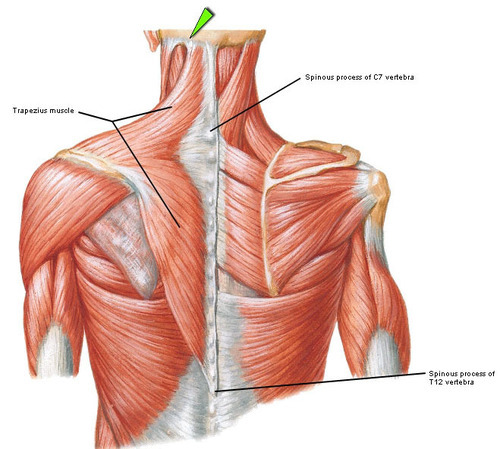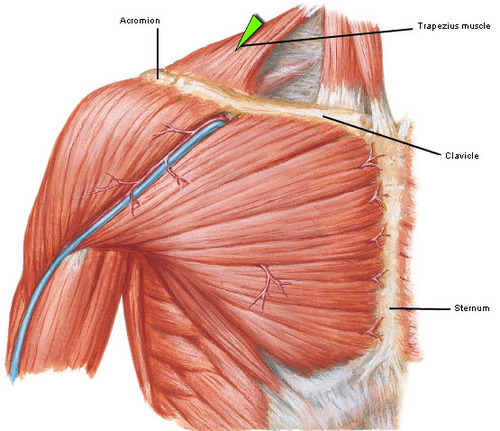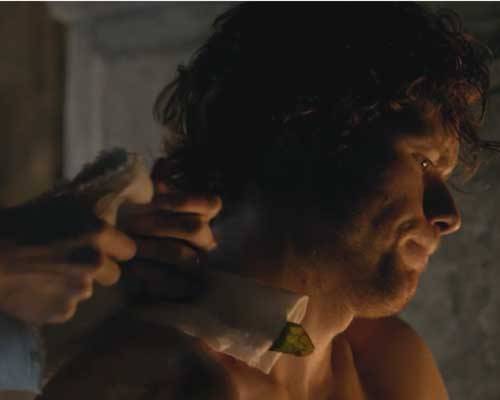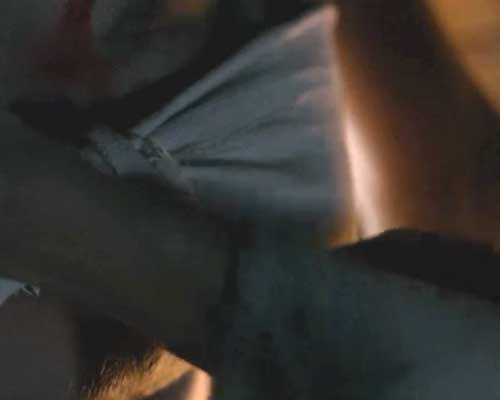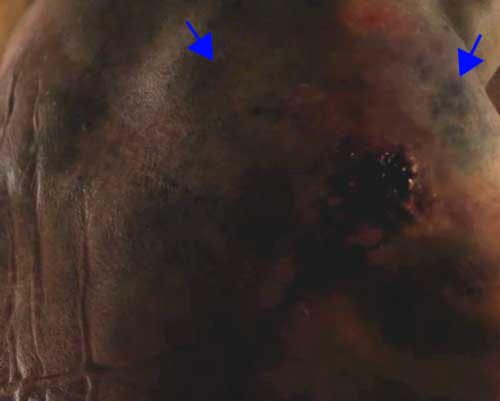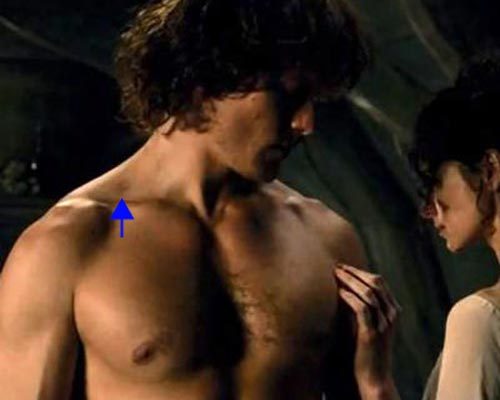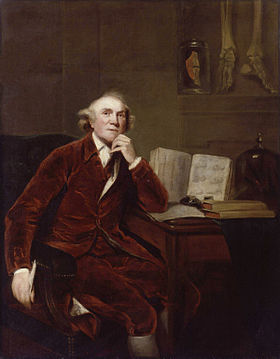Greetings, followers of Outlander Anatomy! Today’s Anatomy Lesson #5: The Skin – Part 1 is extraordinarily important (as are all anatomy lessons) and ye wouldn’t want to get skinned for skipping what is vital to yer own well-being as we learn about our skin!
WARNING! This post includes spoiler alerts and the image of a dissected human body. If you are a bit squeamish about such images, you may want to skip it. Dougal will give ye a second warning just prior!
OK, now, about skin….Herself writes about skin throughout all of the Outlander books where it is used to define characters, enhance scenes, and provide a substrate for Claire’s practice of medicine. As ye ken, the Starz Outlander series and the books are told in the voice of Claire, our braw and lovely heroine! Thus, we must rely on images or observations made by others to inform us as about Claire’s skin which I will use to segue into today’s anatomy lesson!
Let us begin…
In Starz episode 1, Sassenach, we see Claire and Frank driving through the Scottish countryside. On a second honeymoon, they are trying to reconnect after serving apart in WW II. We see that Claire has very pale, clear skin framed by a mass of curly, brown hair.
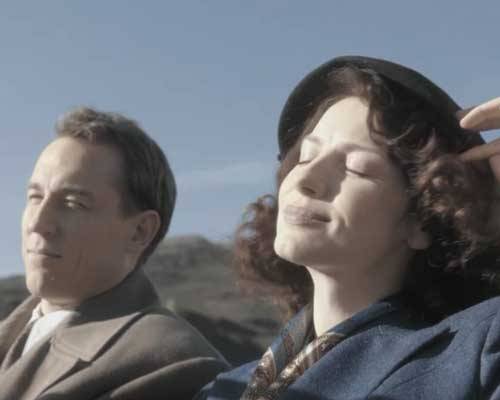
Herself informs us through polished, sophisticated and urbane Frank that Claire’s ”…skin glows like ivory.” Then Frank makes love to Claire in the grass at the base of Craigh na Dun where he tells her that her skin is like white velvet. Because I don’t have images to match these descriptions, I substitute one from a later episode (Starz episode 6, The Garrison Commander), so along with Frank, we may witness Claire and her beautiful skin!
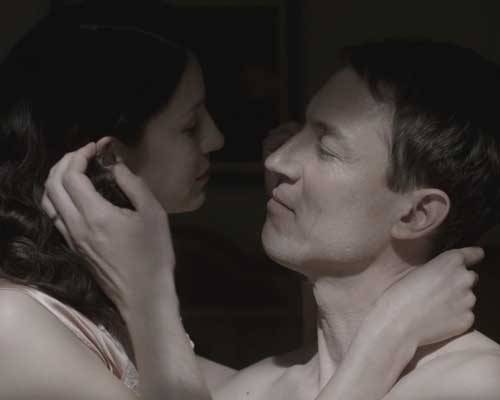
Next, in a very telling scene from Starz episode 3, The Way Out, Mrs. Fitz helps bathe and dry Claire despite to her protestations; Claire avers that she is able to tend to her own ablutions! But a persistent Mrs. Fitz kindly observes:
Such beautiful skin ya’ have! I’ve never seen a woman past 8 or 9 with skin so unmarked by injury or illness. Yer next husband will be a lucky man!
Aye, that he will…chuckle!
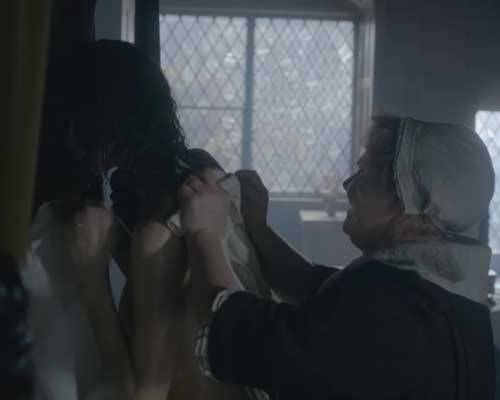
To me, Claire’s beautiful skin is most telling (Starz episode 8, Both sides Now) during the assault by the redcoat deserter. She wears virtually no makeup, nor is any required in my opinion! Her skin is very pale, very clear and her nose and cheeks are endowed with a faint sprinkle of freckles. Claire also looks very vulnerable, very young and absolutely LOVELY despite the unspeakable situation she finds herself in! I can say this without prejudice because I am an anatomist! Ye ken?
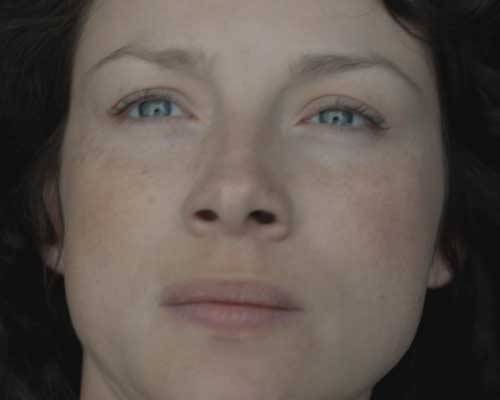
But, the ultimate proof comes from Jamie himself: in Outlander, he tells Claire that she has skin like an “opal” as he slowly traces a finger along her collar bone making her skin glow beneath his touch! And, again from our hero:
“Mo duinne,” he said softly. “But now I should say mo airgeadach. My silver one. Your hair is silver-gilt and your skin is white velvet. Calman geal. White dove”.
Again, no images to match the words, so let’s use this lovely substitute!
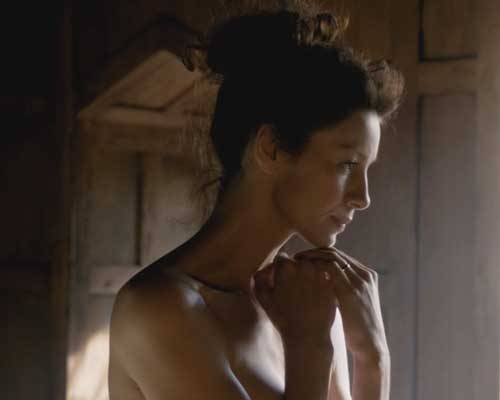
Hey! Mukker! Are ye still wit’ me?! One last image before we git on to our science lesson! In Starz episode 3, The Way Out, Claire is summoned by the MacKenzie. Colum removes his kilt asking her to massage his aching legs. He also asks Mistress Beauchamp if she sews as well as physicks to which Claire responds: “only flesh, a rather poor garment, I’m afraid.” My cue! Weel, I am athinkin’ that Claire’s answer to Colum was deliberately a wee bit coy and evasive because she would know that skin is NO a puir garment at all!
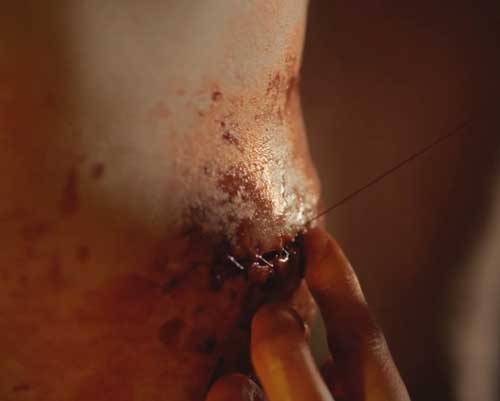
So, now we segue into Anatomy Lesson #5, The Skin…folks, I am here to tell ye that the skin is absolutely a remarkable garment! Ye will no be amiss to think of it as your own personal space suit that enables you to live a terrestrial rather than an aquatic life! It is also the major barrier between a rather inhospitable world and yer insides! Yes, it gets diseased and injured because we are mortal, after all. But, it serves us verra well so please read on!
If ye are squeamish, ye may wish to skip the next image or heed Dougal’s advice…
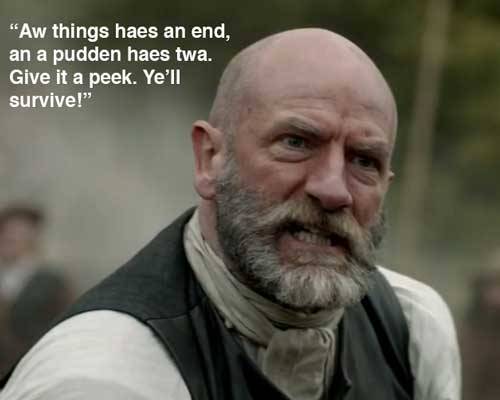
A few years back, German anatomist, Professor Gunther von Hagens brought his world-renown Body Worlds exhibit to my neck of the woods. I was privileged to deliver the key note lecture before the event and was Professor of Anatomy on opening night where I gave mini-lectures and answered questions posed by attendees. Of the many extraordinary figures at that exhibit was one of a man holding his own skin and gazing at it in awe (Photo A). I hope after reading this post, you too will view your own skin with the awe it so richly deserves!
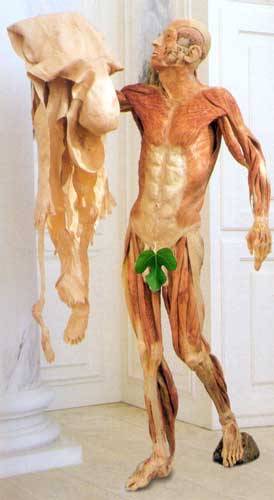 Photo A
Photo A
First off, skin is an organ. Yes, it is! It is also the heaviest organ of the human body! Really, ye say? Yup, it accounts for at least 8% of our body weight (some studies claim as much as 16%) and covers a surface area of about 20 ft2 or 1.9 m2! Want to determine the weight of your own skin? It’s simple! Just multiply your weight in pounds or kilos by .08 – the answer is the approximately the weight of your own skin!
Skin also produces all of our body hair, fingernails, toenails, sweat glands, sebaceous glands, the female breasts and the male nipples and areolas. All of these appendages are skin derivatives and therefore part of the organ itself. Earlier, I mentioned Claire’s hair and now ye ken why because hair is part of the skin. But, as Claire’s hair makes for an interesting subject in its own right, I will address hair in my next post: The Skin – Part 2! And won’t it be fun to see the Outlander Starz results in it’s “hair as a character” poll this Saturday!
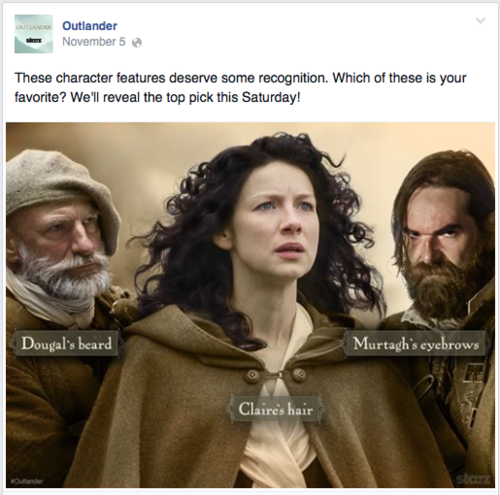
Ok, this next one is a gratuitous shot…sorry I just canna help it! Weel, not entirely gratuitous – it does show hair and skin and one other thing I havna yet told ye: the enamel of the teeth is derived from modified skin of the mouth. Geez, even his teeth are gorgeous! Get a grip prof! Focus!
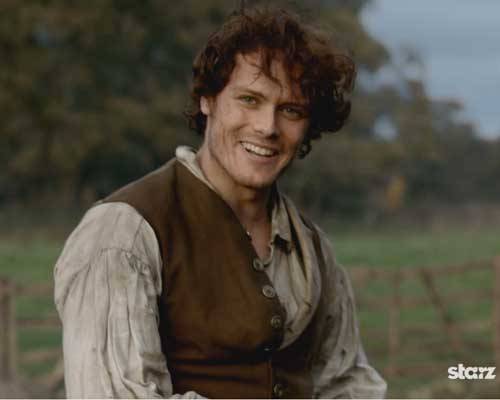
Ahem…now, back to the lecture! Skin thickness varies throughout the body; some skin is thick for protection such as on the soles of our feet or thin as on our eyelids where thickness is not required. Skin is also more heavily pigmented in some areas (nipple and areola) than in others (belly). Most of the skin bears either fine or coarse hairs but some areas are completely devoid of hair: the so-called glaborous surfaces of the body such as the palms and soles where hair, if present, would interfere with grip.
Skin is composed of two important layers: a thin outer epidermis that sits atop a thicker inner dermis (See photo C). Deep to the dermis is the hypodermis; although not part of the skin, it is important because it helps anchor the skin to underlying structures such as muscle or bone (Photo B). In addition, some skin structures are actually anchored in the hypodermis.
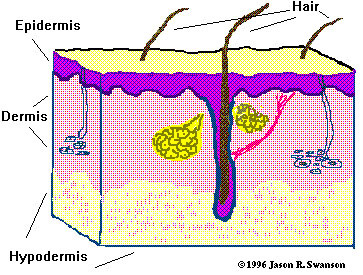 Photo B
Photo B
The epidermis is composed of skin cells and some other cell types. It also completely replaces itself about every four weeks, with new cells forming at the base and advancing toward the surface where they die and slough. So, cells at the skin surface are flat and dead – these cells exfoliate naturally (did ye know that a large portion of house dust is shed skin cells?) or ye pay for exfoliation by costly products or at expensive salons (Photo C – this 3-D image was taken with a powerful scanning electron microscope or SEM)! The supporting dermis houses two types of sweat glands, sebaceous glands, blood vessels, hair follicles, and special microscopic endings for sensation.
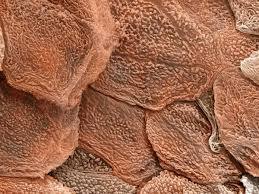 Photo C
Photo C
So what about sweat glands? The skin actually includes two different types: apocrine sweat glands are present only in the arm pits (axilla in anatomy, remember?) and our private regions (perineum in anatomy). The thicker sweat from these glands is initially odorless but when acted on by skin bacteria, it develops a pungent, acrid smell. This is the unwashed male that Claire muses on while sharing Jamie’s mount (Outlander book) – although females most certainly battle the same issue! A second type, the eccrine sweat gland, is ubiquitous throughout the remaining skin; sweat from this gland is watery and usually exudes an ammonia smell. Photo D shows the multiple openings (pores) of eccrine sweat glands on the finger pad.
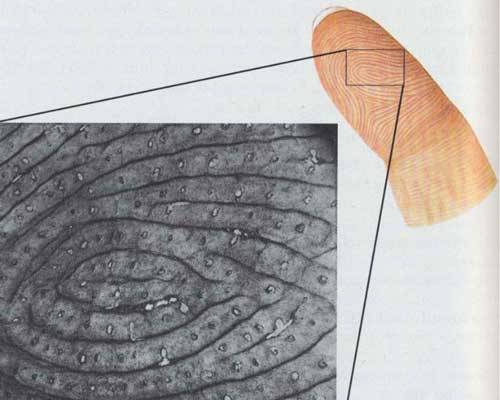
Photo D
The process of sweating from eccrine sweat glands is captured in Photo E. Here, following exercise, blue sweat droplets bead on skin from the back of the hand. This 3-D photo was again taken the powerful SEM. The colors, however, are not real – they were computer generated.
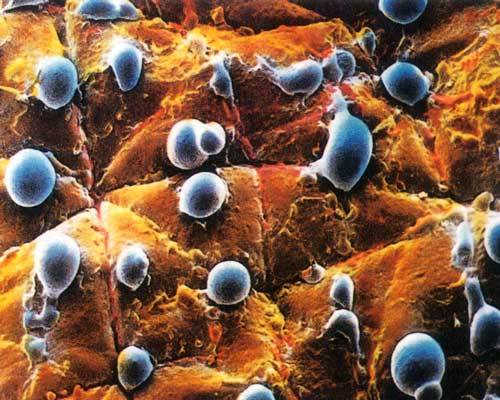
Photo E
As fer the sebaceous glands, I’ll be leaving those until my next post: The Skin – Part 2! Next, a question commonly asked by students: what causes the wide variation in human skin tones (see Photo F)?
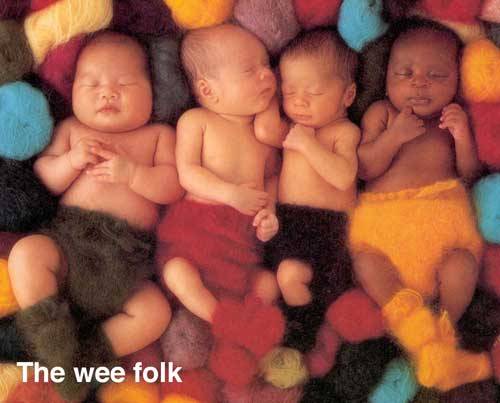
Photo F
Weel, it turns out that there are a number of reasons for our individual skin color. One cause is the number of blood vessels in the dermis and the color of blood surging through them (bright red arterial blood versus duskier venous blood). Just fer fun, let’s compare and contrast the color of Claire skin wit’ that of Jamie’s in this image from Starz episode 1, Sassenach. We clearly see Claire’s naturally cool and pale complexion but partly because she is royally pissed, holding herself aloof from all the male funnin’ goin’ on around her. But, Jamie’s skin is strikingly different! Although Jamie is splattered in blood and he has naturally ruddy skin, it is enhanced in this scene having exerted himself in battle and during Claire’s recapture so ye can bet at this point there’s a whole lot of bright red arterial blood circulating through the vessels of his dermis!

Another contribution to overall skin color depends on how much carotene we consumed in our diets: carotene is an orange pigment prevalent in fruits and veggies such as cantaloupe, sweet potato and carrot (Photo G). Carotene absorbed from our food gets deposited in the epidermis where it adds to skin color and also helps protect epidermal cells from damage by UV light.
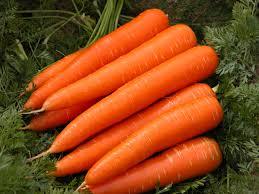 Photo G
Photo G
But, the most significant contribution to skin color comes from special cells of the epidermis, the melanocytes (Photo H). These scattered squid-like cells produce and package the pigment, melanin, into granules that are released into surrounding skin cells. Interestingly, the number of melanocytes in a given region of the skin is the same regardless of skin tone or gender. So, differences in skin color are due mainly to differences in the number and size of the melanin packets produced and this in turn is determined by genetics! In darker skins, the melanin granules are larger, more numerous, persist longer and are distributed throughout the epidermis. Pale skin has fewer, smaller melanin granules that are confined to cells at the base of the epidermis and degrade more quickly.
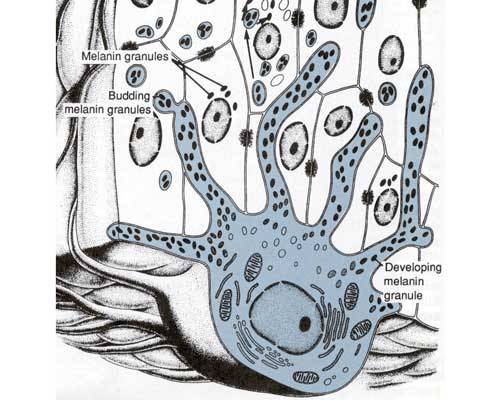 Photo H
Photo H
Ye can deliberately increase the production of melanin granules and darken existing melanin in yer own skin by exposure to UV light either from the sun or from tanning beds. I ken the beds are a very popular trend, but I want to WARN ye: For some very sound medical reasons, ye should NOT expose yer skin to UV light from tanning beds and ye should also be judicious about tanning from the sun’s rays too, especially if ye are fair of skin like Claire! I urge ye to get informed about it!
Now, ye are all are probably aware of albinism (Photo I), a condition affecting animals (humans, spiders, snakes, apes, etc.) where the sufferer lacks an enzyme needed to make melanin (albinism occurs in plants too but is due to an absence of chlorophyll). Albinos (Latin: albus for white) do NOT make any melanin in the skin, hair or the irises of the eyes! This is a difficult condition because their eyes are highly sensitive to light (photophobia) and they have difficulty tracking the eyes normally. The skin is also highly susceptible to skin cancers! It is a condition which, at present, has no cure but there are steps that can be taken to protect the skin and aide the eyes.
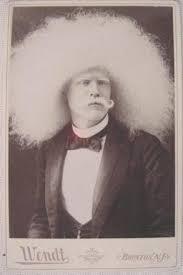 Photo I
Photo I
Finally our skin has a battery of sensory endings specialized to detect changes in our environment and transmit these to our nervous system. The fingertips alone have about 2500 of these receptors per cm2 (about 0.2 in2) of skin! I’ll not show pictures of these endings because they are a wee bit too technical. In summary, then, here is a short list of what skin does for Claire and for us all!
- It is an anatomical barrier against pathogens and damage.
- It provides sensation in the form of pain, touch, pressure, heat, cold and vibration.
- It regulates our body temperature by dilating or constricting blood vessels in the dermis and cooling the skin by the evaporation of sweat.
- It helps control fluid loss.
- Helps synthesize vitamin D via UV radiation.
- It aids in excretion of waste products.
- It aids in communication: others assess our mood, physical state or attractiveness by the state of our skin.
Impressed yet? I know I am and I’ve been teaching this subject for a verra long time!
Speaking of mood, let’s close wit’ this touching image from Starz episode 7 The Wedding, where Jamie pays homage to the skin of his bride of astonishing beauty with a soft murmur and a tentative touch!

Aye, Jamie, ye are ready! And, so is Claire – she sure took long enough! Snort!
I do hope ye have a better understanding and appreciation of the skin ye are in and have an increased desire to take verra good care of it!
A wee note of explanation: I will also continue my convention of typically using the character’s names rather than the names of the actors. This gives the cast at least one degree of separation and a wee bit o’ respect as I dissect their bodies on a blog! I hope ye all understand.
The deeply grateful,
Outlander Anatomist
Images are from Starz Outlander series. Microscopic images and drawings from Netter’s Atlas of Human Anatomy, 4th ed., Bailey’s Textbook of histology, 10th ed. or Bloom & Fawcett’s Concise Histology, 2nd ed, and the National Geographic, Skinned man from Body Worlds exhibit (sans the fig leaf), CGI image of epidermis and dermis from Loyola University Dermatology website, Baby photo from an older United Colors of Benneton ad, Photo of carrots from Gov. of West Australia and fig leaf from ClipArt, Archival photo of albino man taken by an unknown photographer – beginning of the 20th century.

